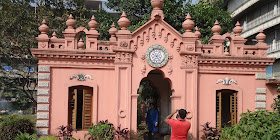How to use a DSLR camera in metering mode?
The main reason for using a digital SLR camera is that you want high-quality pictures. You are not satisfied with the camera shelf and click to take a picture. For a good photo, you have to keep an eye on everything you need for the photo. The keyword in photography is photo or light. Pictures are good or bad depending on how you use them perfectly.
All cameras have a system called metering. The camera itself can tell you how much aperture to use and how much shutter speed to use for the light in front. If you specify one, you don't even have to think about how much the other will fit. Apart from this, the SLR camera has a more accurate light usage system.
The Nikon D-90 camera is being used here as an example. Nikon's other SLR cameras can be used in the same way, but other brands have different buttons, but the key is the same.
Camera in the metering mode
You will use the front view to measure exposure. But how much part. Where there is more light in one place, less in another place. When taking a picture of a bird, you may want to take a picture of its head with its head, but when taking a picture of a garden, you want to consider quite a few places with shade.
D-90 metering mode 3 types. Matrix, centre-weighted and spot.
Matrix Metering:
This is the most commonly used. The light from the front view enters the camera sensor and finds the exact value thereby matching the millions of patterns in the database.
Centre-weighted Metering:
The whole scene will be taken into consideration, but more importantly, will be given to the 8 mm area of the centre.
Spot metering:
The 3.5 mm area of the centre will be calculated with priority.
Metering mode change
Hold down the metering button while the camera is on (next to the shutter release button).
Turn the command dial and select the correct mode.
You can use the display above to view the settings or turn on the LCD.
Use the correct metering mode according to the subject of the photo, take good pictures.





